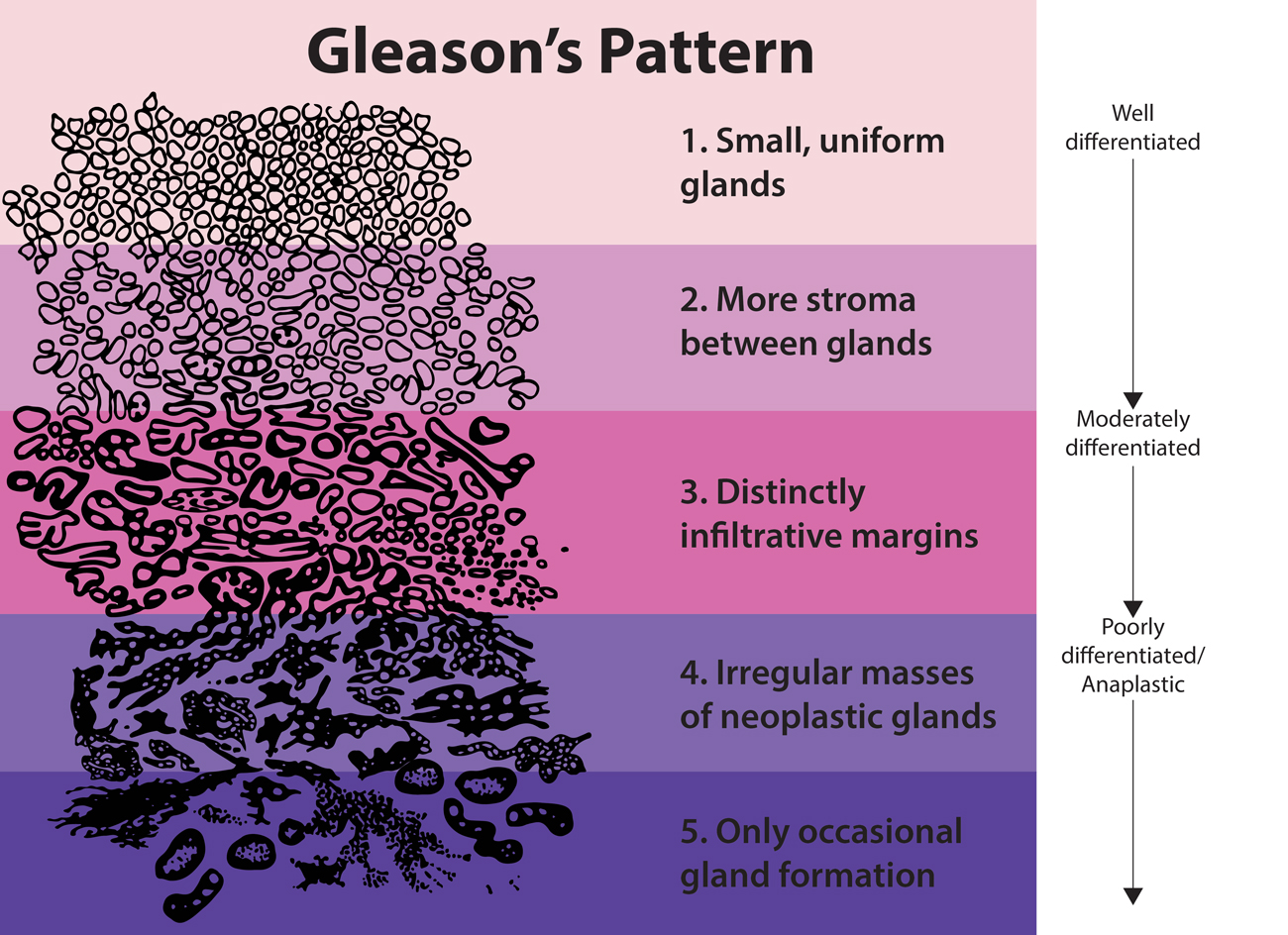Morphology & Grade
ICD-O-3 Morphology Codes
If the diagnostic term in the pathology report is not in the list below, be sure to consult your ICD-O manual.
- Adenocarcinoma (81403; 95% of all prostate cancers)
- Rare histologies
- Sarcoma
- Transitional cell carcinoma (81303)
- Small cell carcinoma (804_3)
- Squamous cell carcinoma (807_3)
Grade of tumor is an important factor for prostate cancer.

- Grade 1 (G1) Well-differentiated, slight anaplasia
- Grade 2 (G2) Moderately differentiated, moderate anaplasia
- Grade 3-4 (G3-4) Poorly differentiated or undifferentiated, anaplastic, marked anaplasia.
Gleason's Score/System for Histologic Grading of Prostate Cancer
Gleason's system assigns histologic grade to predominant (primary) and lesser (secondary) pattern of tumor. The grade numbers of the two patterns are added to obtain the Gleason score, which may range from 2 to 10.
Gleason's system can be extrapolated to the 6th digit ICD-O grade or differentiation code using the following table.
| Gleason's Pattern | Gleason's Score | Histologic Grade | Differentiation (6th Digit) |
|---|---|---|---|
| 1, 2 | 2, 3, 4 | I. Well-differentiated | 1 |
| 3 | 5, 6 | II. Moderately differentiated | 2 |
| 4, 5 | 7, 8,9,10 | III. Poorly Differentiated | 3 |
* Also FORDS scores a 7 as Poorly Differentiated 3
